5.4 Working with search results
This section tells you how to work with the results that display after a successful search:
5.4.1 About search results
The content of your search results depends on the type of search you perform:
For a user search
In the results of a user search, the list of users provides tabs for three views of the information:
-
Identity (contact information)
-
Location (geographical information)
-
Organization (organizational information)
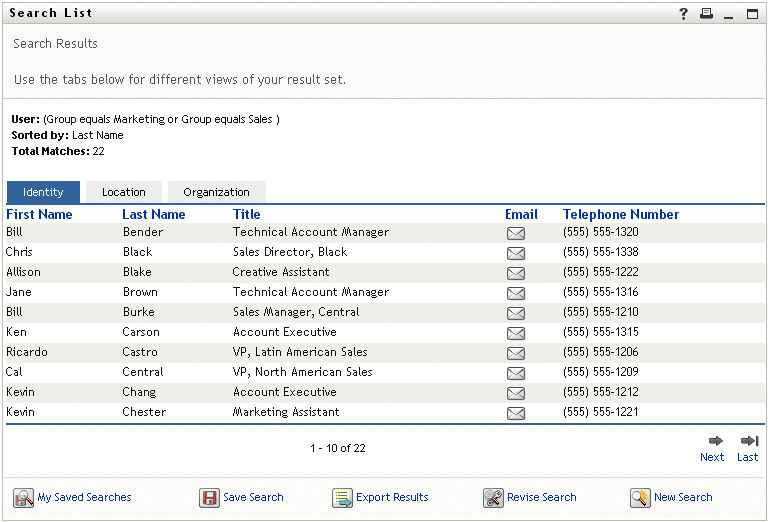
For a group search
In the results of a group search, the list of groups provides a single view of the information: Organization.
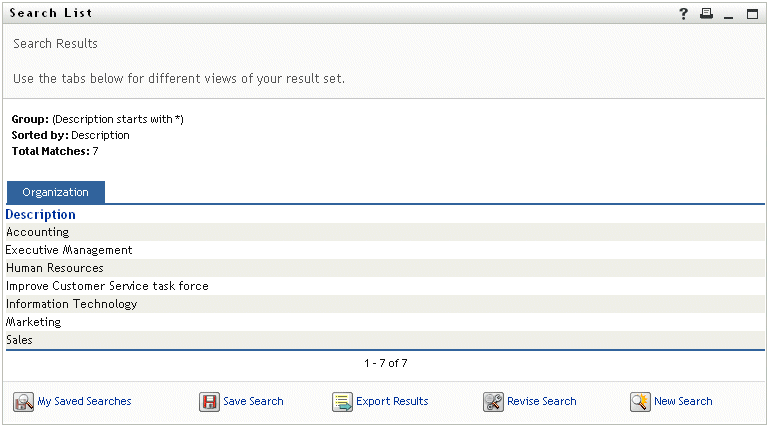
For a task group search
In the results of a task group search, the list of task groups provides a single view of the information: Organization.
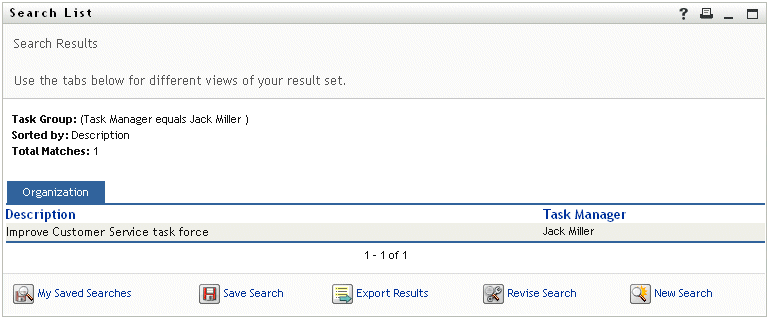
5.4.2 Using the list
You can do the following with the list of rows that displays to represent your results:
-
Switch to a different view
-
Sort the rows
-
Display detailed information
-
Send e-mail to a user
To switch to a different view:
-
Simply click the tab for the view you want to display.
To sort the rows of information:
-
Click a column heading by which you want to sort.
The initial sort is in ascending order.
-
You can toggle between ascending and descending order by clicking the column heading again (as often as you like).
To display details (Profile page) for a user, group, or task group:
-
Click the row for the user, group, or task group whose details you want to see (but don’t click directly on an e-mail icon unless you want to send a message instead).
The Profile page displays, showing detailed information about your chosen user, group, or task group:
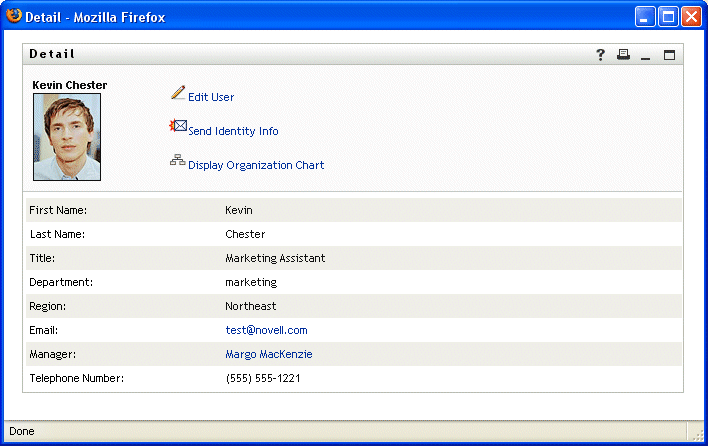
This page is just like the My Profile page on the Identity Self-Service tab. The only difference is that, when you are viewing details about another user, group, or task group (instead of yourself), you may not be authorized to see some of the data or perform some of the actions on the page. Consult your system administrator for assistance.
To learn about using the features of the Profile page, see Section 4.0, Using My Profile.
-
When you’re done with the Profile page, you can close its window.
To send new e-mail to a user in the list:
-
Find the row of a user to whom you want to send e-mail.
-
Click the e-mail icon in that user’s row:

A new message is created in your default e-mail client. The message is blank except for the To list, which specifies your chosen user as a recipient.
-
Fill in the message contents.
-
Send the message.
5.4.3 Other actions you can perform
While displaying search results, you can also:
-
Save the search
-
Export the results
-
Revise the search
To save the current set of search criteria for future reuse:
-
Click the Save Search button (at the bottom of the page).
-
When prompted, specify a name for this search.
If you’re viewing the results of an existing saved search, that search name displays as the default. This enables you to update a saved search with any criteria changes you’ve made.
Otherwise, if you type a search name that conflicts with the name of an existing saved search, a version number is automatically added to the end of the name when your new search is saved.
-
Click OK to save the search.
The My Saved Searches page displays so you can see your saved search listed.
To learn more about working with saved searches, see Section 5.5, Using saved searches.
To export search results to a text file:
-
Click the Export Results button (at the bottom of the page).
The Export page displays:
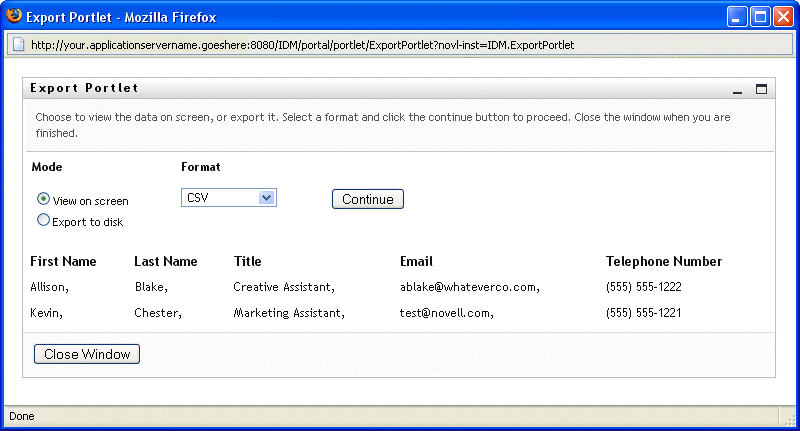
By default, the View on screen radio button is selected and CSV is chosen in the format dropdown. Consequently, the Export page shows your current search results in CSV (Comma Separated Value) format.
-
If you want to see what those search results look like in Tab Delimited format instead, select Tab Delimited in the dropdown, then click the Continue button.
-
When you’re ready to export your current search results to a text file, select the Export to disk radio button.
The Export page displays as follows:
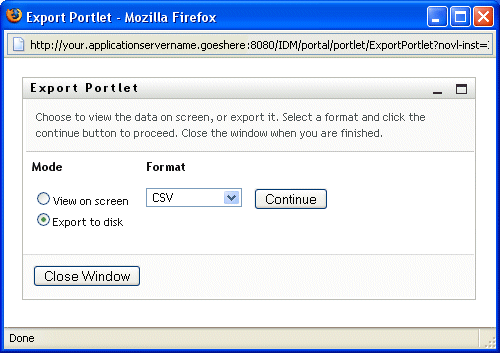
-
Use the format dropdown to select one of the following formats for the exported search results:
Then click the Continue button.
-
When prompted, specify where to save the file of exported search results on disk.
-
When you’re finished exporting, click Close Window.
To revise a search (by changing its criteria):
-
Click the Revise Search button (at the bottom of the page).
This takes you to either the Basic Search page or the Advanced Search page, depending on the complexity of the current search criteria. You’ll see those criteria on the page.
-
Make your revisions to the search criteria according to the instructions in these sections: